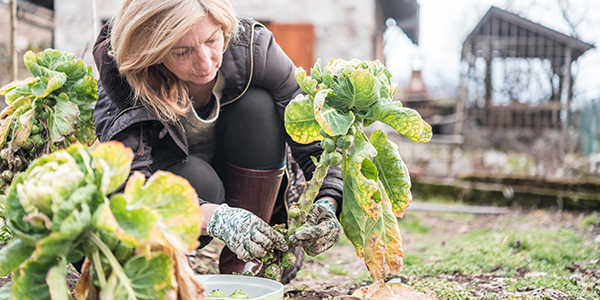It may be hard to believe, but winter weather does not signal the end of gardening season! Whether growing plants for fun or growing vegetables to feed your family, you can enjoy winter gardening in Ohio. Follow this advice to grow plants and veggies year-round. Plus, learn which vegetable varieties grow best in the winter. If you have any questions or would like more information, please contact us.
The Benefits of Winter Gardening
Yes, it's true; winter gardening is possible in Ohio, along with almost everywhere else in the United States. Plus, winter gardening comes with many added benefits over gardening during other times of the year. First of all, weeds grow slower in the winter. Plus, many pests hibernate or migrate when the weather gets cold. Additionally, plants need far less water in the winter because of low light and less evaporation than other seasons.

Winter Gardening Without a Greenhouse
Many plants don't need warmth during summer months, but they do require protection from winter elements like harsh wind. Consider the following solutions:
- Cold Frames: A cold frame is an ideal solution for winter gardening. A cold frame refers to a box with a clear top and no bottom that can serve as a makeshift greenhouse. You can make a cold frame from an old window on a wooden, metal, or straw-base base, for example. Your plants will need ventilation, so prop the frame open during sunny days. Keep in mind: Cold frames usually eliminate the need to water between mid-November through mid-February.
- Row Covers: Row covers refers to lightweight, semi-transparent fabric, sometimes called Reemay. Row covers self-ventilate and allow light, water, and air through, but hold warmth and protect against the wind. The fabric can sit directly on plants with rocks on the edges to hold it down.
- Cloches or Milk Jugs: Otherwise, you could also place a glass cloche on top of each plant. Or, you could use a recycled plastic milk jug cut in half. Remember to remove them on sunny days. To learn more about using milk jugs for winter gardening, click here.
Understanding the USDA Hardiness Zone Map
Before winter gardening, you must first understand the USDA Hardiness Zone Map. The zone map divides North America into zones by average annual low temperatures. Ohio is located within Zone 6, which typically reaches an annual low temperature between 0°F through -10°F.
The key to winter gardening is to plant crops soon enough that they have time to mature before the first killing frost. In Ohio, the first frost date is around October 15. That’s why it's important to know the approximate maturity lengths for different cold-hardy plants:
- July 1: Plant slowly-maturing cold-hardy crops such as beets, cabbage, brussels sprouts, carrots, onions, and parsnips.
- August 1: Plant moderately-maturing cold-hardy crops such as kale, turnips, collard greens, radishes, chard, leeks, scallions, and kohlrabi.
- September 1: Plant quickly-maturing cold-hardy crops such as lettuce, spinach, endive, arugula, chicory, and bok choy.
Pay attention to weather variations and experiment to discover the planting schedule that works best for you.
What Plants Will Grow During the Winter?
Understanding the annual low you will help you determine which plants may survive the harsh winter temperatures in Ohio, which may include:
- Winter Herbs: Many winter herbs can grow outdoors in Zones 6, such as basil, mint, sage, thyme, oregano, chamomile, lavender, chives, and tarragon. You can plant winter herbs outdoors in the fall and then move them into a greenhouse when the frost hits.
- Leafy Greens: Spinach, cabbage, kale, radicchio, collard greens, swiss chard, endive, arugula, and bok choy can thrive in a winter greenhouse. Plant leafy greens in a raised bed during the fall while the soil is still warm, then cover them with a cold frame. On sunny fall days, open it up to allow air circulation and prevent overheating, excessive moisture buildup, and disease or insect infestation.
- Root Vegetables: Carrots, beets, radishes, onions, garlic, and turnips are great root vegetables to plant for winter gardening. Leeks, parsnips, and rutabagas may also survive in Zone 6 winters. Plant them during the fall and either harvest them during the winter or early spring. Like leafy greens, you should grow root vegetables in a raised bed with a cold frame.
- Potatoes: Potatoes can be grown in the winter in a greenhouse, provided you keep them safe from frost. Each variety of potato takes about 80 to 100 days to grow. If you plant them in November or December, you should be able to harvest them in February or March.
Start Your Winter Gardening Plan Now
It's not for everyone, but gardeners who'd like to experiment with winter gardening will be rewarded with delicious homegrown veggies on the coldest winter days. To begin your winter gardening adventure, find the products you need on our website or in our stores. Feel free to contact us with any questions you may have. Our friendly team would love to help you begin winter gardening!
